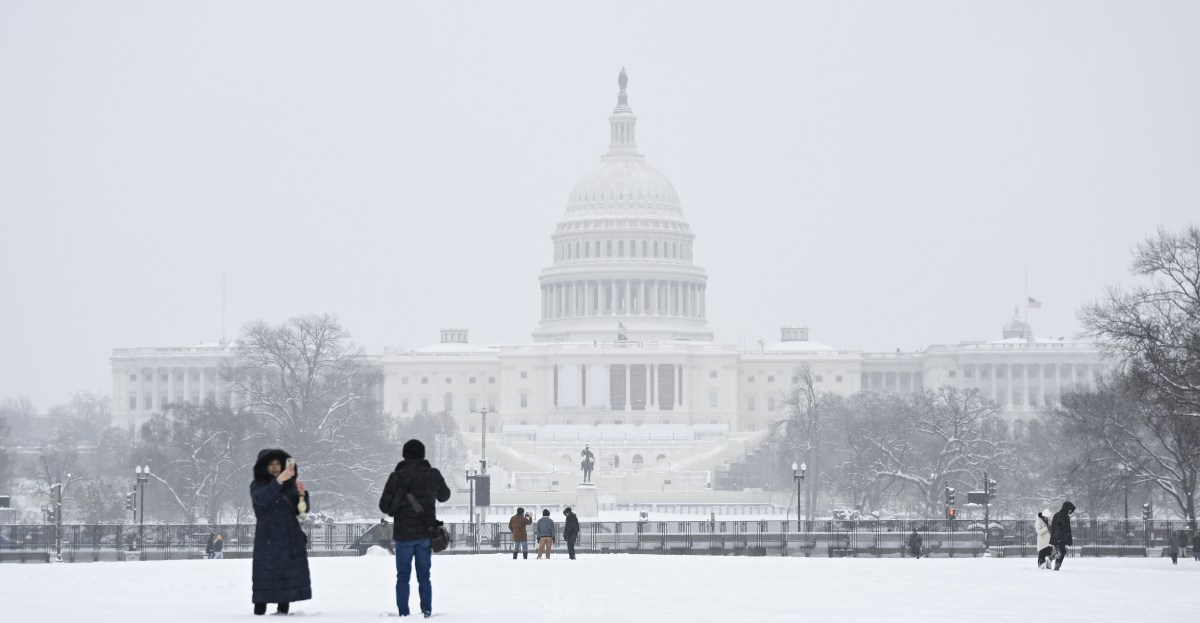Unraveling the Mystery Behind This Unprecedented Cold Snap
As frigid temperatures grip the nation, a sense of bewilderment and concern has spread among residents and experts alike. The recent cold snap, more severe than many anticipated, has led to significant disruptions across various regions. But what’s truly driving this unusual weather phenomenon? A closer look reveals a complex interplay of climate patterns and atmospheric conditions that could redefine our understanding of winter weather.
The Science Behind the Cold Snap
To comprehend the factors behind this unprecedented cold snap, we must first analyze the atmospheric dynamics at play. Historically, cold snaps occur when Arctic air plunges southward, typically facilitated by shifts in the jet stream. The jet stream, a fast-moving ribbon of air high in the atmosphere, plays a pivotal role in determining weather patterns.
Jet Stream Wobbles
The current cold snap can be primarily attributed to a significant **wobble in the jet stream**. This phenomenon, often referred to as a “Rossby wave,” can lead to prolonged periods of cold weather in certain regions while simultaneously allowing warmer air to invade others. As the jet stream dips south, it drags cold Arctic air along with it, creating conditions ripe for extreme cold.
Experts note that this year’s jet stream pattern has been particularly erratic, influenced by several key factors:
- Temperature Anomalies: Unusual warmth in the Arctic can weaken the polar vortex, the area of low pressure that typically contains colder air. When this vortex is disrupted, it can lead to southward expansions of cold air.
- Ocean Currents: Variations in sea surface temperatures, especially in the Pacific Ocean, can impact atmospheric circulation, affecting the jet stream’s path.
- Climate Change: While it may seem counterintuitive, rising global temperatures can actually lead to more extreme winter weather as they disrupt traditional patterns.
Impact on Daily Life
The repercussions of this cold snap have been felt far and wide, impacting daily life in profound ways. Transportation systems have been severely disrupted, with flights delayed or canceled due to icy conditions. Roadways have become treacherous, leading to accidents and increased travel times. Moreover, energy consumption spikes as households crank up their heating systems to combat the extreme chill.
Health Risks
Beyond logistical challenges, the cold snap poses serious health risks. Prolonged exposure to frigid temperatures can lead to frostbite and hypothermia, particularly among vulnerable populations, such as the elderly and those without access to adequate heating. Hospitals often see a rise in respiratory illnesses during such events, as cold air can exacerbate existing health conditions.
Climate Patterns at Play
The ongoing cold snap serves as a stark reminder of the intricate relationship between climate patterns and weather events. Understanding these patterns helps us anticipate and prepare for future occurrences. Here are several critical climate phenomena that influence winter weather:
- El Niño and La Niña: These periodic climate patterns in the Pacific Ocean can significantly affect weather across North America. For instance, a strong La Niña can lead to colder and wetter winters in the northern states.
- North Atlantic Oscillation (NAO): The NAO influences winter weather in Europe and North America. A negative phase can result in colder conditions in the eastern U.S., coinciding with our current weather patterns.
- Arctic Oscillation (AO): Similar to the NAO, the AO describes pressure patterns in the Arctic. A negative AO can promote colder air masses moving south.
Future Projections
As we unravel the mystery behind this unprecedented cold snap, it’s vital to consider future implications. Climate scientists are keenly observing how ongoing climate change might influence the frequency and severity of such extreme cold events. While it’s essential to recognize the natural variability of weather, there’s growing evidence that climate change could lead to more unpredictable and severe winter conditions.
Adaptation and Preparedness
Communities must prioritize adaptation to these changing winter weather patterns. Some strategies include:
- Improving Infrastructure: Investing in infrastructure that can withstand extreme weather conditions, such as better insulation in homes and more resilient transportation systems.
- Public Awareness Campaigns: Educating the public about the risks associated with extreme cold and how to prepare effectively.
- Emergency Response Plans: Ensuring that local response teams are equipped to handle cold-related emergencies, including shelter provisions for those in need.
Conclusion: A Call to Action
The current cold snap is more than just a weather event; it’s an opportunity for us to reflect on our relationship with the climate and our preparedness for extreme weather. As experts unravel the mystery behind this unprecedented cold snap, it becomes clear that understanding the driving forces behind winter weather is crucial for our safety and well-being.
As we move forward, it is essential to foster a culture of preparedness and resilience. By doing so, we can not only navigate the challenges posed by current cold snaps but also build a more secure future in the face of an unpredictable climate. The interplay of atmospheric conditions may seem complex, but with awareness and action, we can better adapt to whatever nature throws our way.
See more Your Daily Weather



